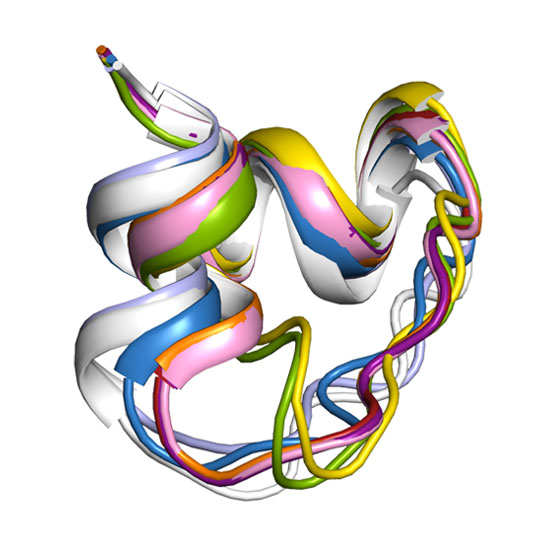Mechanism of Allosteric Inhibition of the Enzyme IspD by Three Different Classes of Ligands
07-Jul-2017
ACS Chem. Biol., 2017, 12 (8), pp 2132–2138, DOI: 10.1021/acschembio.7b00004
ACS Chem. Biol., online article
Enzymes of the nonmevalonate pathway of isoprenoid biosynthesis are attractive targets for the development of herbicides and drugs against infectious diseases. While this pathway is essential for many pathogens and plants, mammals do not depend on it for the synthesis of isoprenoids. IspD, the third enzyme of the nonmevalonate pathway, is unique in that it has an allosteric regulatory site. We elucidated the binding mode of phenylisoxazoles, a new class of allosteric inhibitors. Allosteric inhibition is effected by large conformational changes of a loop region proximal to the active site. We investigated the different roles of residues in this loop by mutation studies and identified repulsive interactions with Asp291 and Asp292 to be responsible for inhibition. Crystallographic data and the response of mutant enzymes to three different classes of allosteric inhibitors provide an in-depth understanding of the allosteric mechanism. The obtained mutant enzymes show selective resistance to allosteric inhibitors and provide conceptually valuable information for future engineering of herbicide-resistant crops. We found that the isoprenoid precursors IPP and DMAPP are natural inhibitors of Arabidopsis thaliana IspD; however, they do not seem to bind to the allosteric site.











